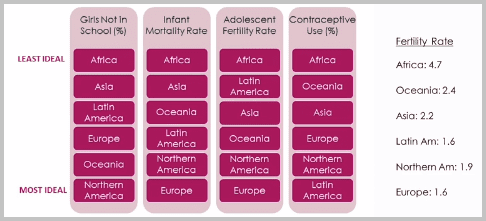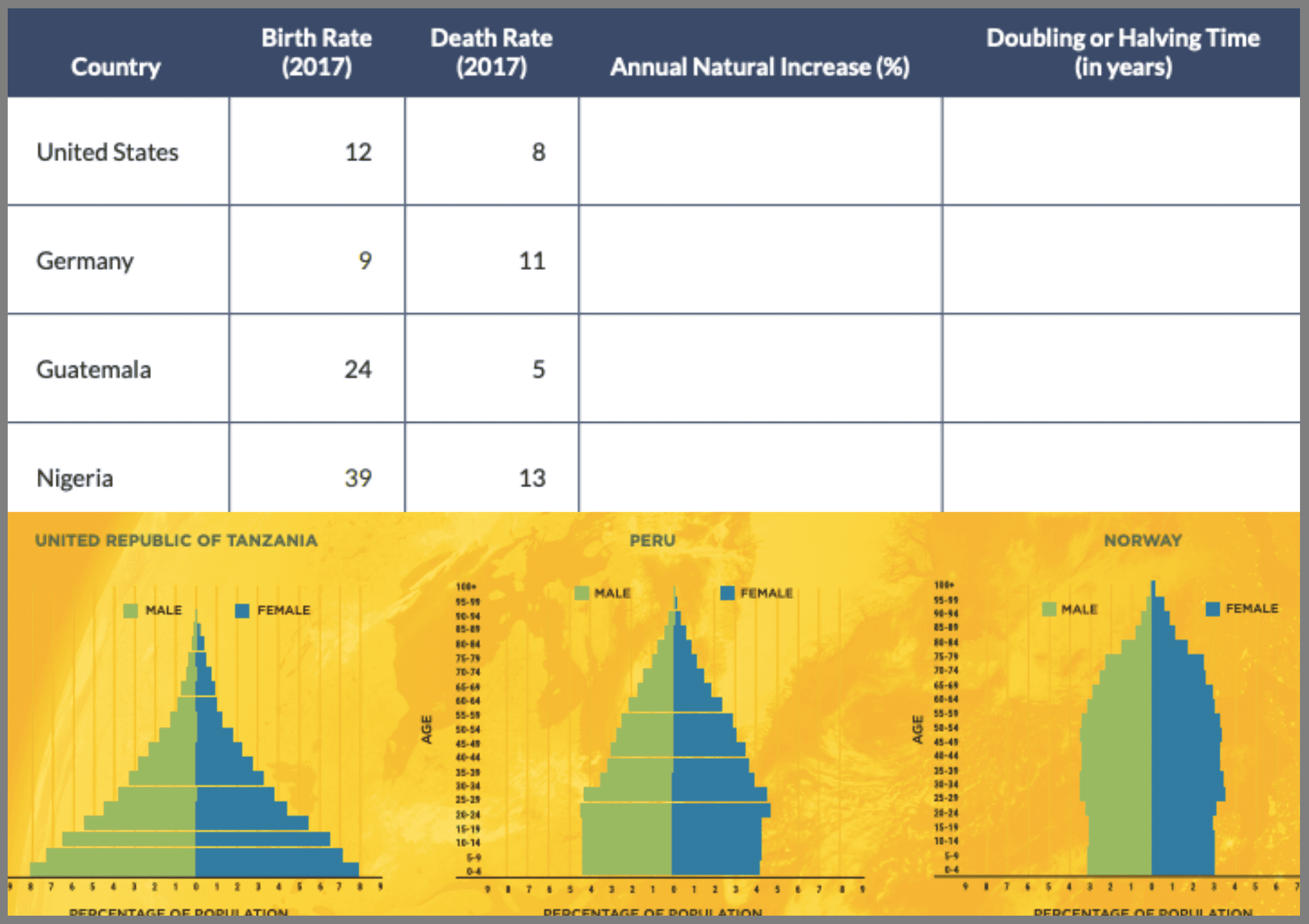For the next two months, we’ll be sharing free, downloadable lesson plans and other K-12 resources for teaching the numerous and complex factors that lead to population growth. To get the lessons, follow PopEd on Facebook or Twitter!
This Month’s PopEd Theme: Why Populations Grow
Join PopEd this fall as we dive into one of the most fundamental, yet complex questions of demographics – why populations grow.

The global population has grown from 1 billion people to nearly 8 billion people in just over 200 years and we currently add about 84 million people to our global family annually. By 2100, the UN predicts that our planet will house nearly 3 billion additional people. This leads us to some big questions:
- Why have we seen such rapid population growth during the past two centuries?
- Why are some country’s experiencing rapid population growth while others are declining?
- What factors contribute to population growth?
On the surface, the answer to these questions might seem straight forward – populations grow when fertility plus immigration is higher than mortality plus emigration. But digging deeper reveals that there are a number of social and environmental circumstances that influence these statistics, both globally and on a country level. So to gain a full understanding of why populations grow, we need to look at not just the numbers of births, deaths, and migrants, but also the societal circumstances driving these numbers.

A midwife in Algeria measures the blood pressure of a woman after giving birth in a post-partum visit.
The Best Materials for Teaching Why Populations Grow
Lessons shared over the next two months will cover the ways that demographers measure population growth rates, including the rate of natural increase and doubling times, how the status of women and girls influences fertility, the role of the Demographic Transition Model in explaining population change over time, and the impact of migration.
Here’s a sneak peek at some of the resources we plan to share:
Why Do Populations Grow? Lessons and Tools for Secondary Classrooms (webinar): Join PopEd staff in this on-demand webinar as we share effective strategies for teaching about why populations grow. We facilitate a series of lessons, share classroom tools, and discuss the many social and economic factors that influence population growth around the world.

A Demographically Divided World (lesson plan): In small groups, students explore fertility and mortality trends over time and discuss how factors impacting fertility differ throughout the world. Students then conduct individual research on a single country to evaluate development and place it within the demographic transition model. Finally, the class explores how countries within the same DTM stage compare.
Data visualization of US immigration over 226 years (website): In this stunning visualization, researchers at Northeastern University display U.S. immigration history as a tree trunk with rings showing waves and patterns.

Demographic Facts of Life (lesson plan): Students calculate the rate of natural increase and corresponding doubling time or half-life for several countries and explore factors that influence a country’s birth and death rates.
For free access to similar classroom resources, follow along on Facebook or Twitter. And stay tuned for a future blog outlining ways to teach about population growth in a virtual learning setting. We look forward to helping you teach why populations grow this fall, whether your teaching online or in person!
#PopEdTheme #PopEdWhyPopulationsGrow


